Lessons in Climate-smart healthcare | Member placement - Galician Health Service, Spain
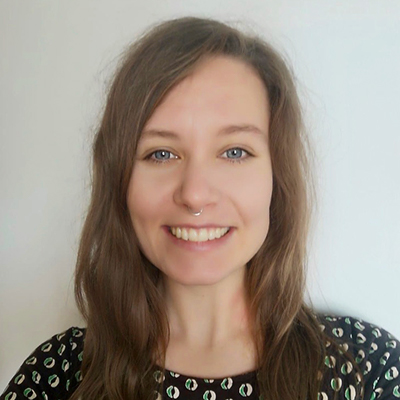
A blog post by Anna Fuhrmann,
Climate Officer - HCWH Europe
In March, I had the exciting opportunity to visit our Global Green and Healthy Hospitals (GGHH) member the Galician Health Service (SERGAS) to learn more about their projects on Climate-smart healthcare and to present them with their well-earned Health Care Climate Challenge Award.
During my visit, I learned about many of the great sustainability projects and programmes at SERGAS and returned to Brussels ready to share best practices with our other members through upcoming case studies.
I was not only able to visit SERGAS’ hospitals and care centres, but I also discovered the beauty of Galicia and the amazing regional dishes (which are also served in the hospitals!).
Galicia is located in the northwest of Spain, bordering Portugal and the Atlantic Ocean. Its health system serves a population of more than 2.5 million people, comprises 470 healthcare facilities, and employs more than 23,000 people.
Thanks to SERGAS’s many engaged staff members, I gained a fascinating insight into the region’s progress in Climate-smart healthcare.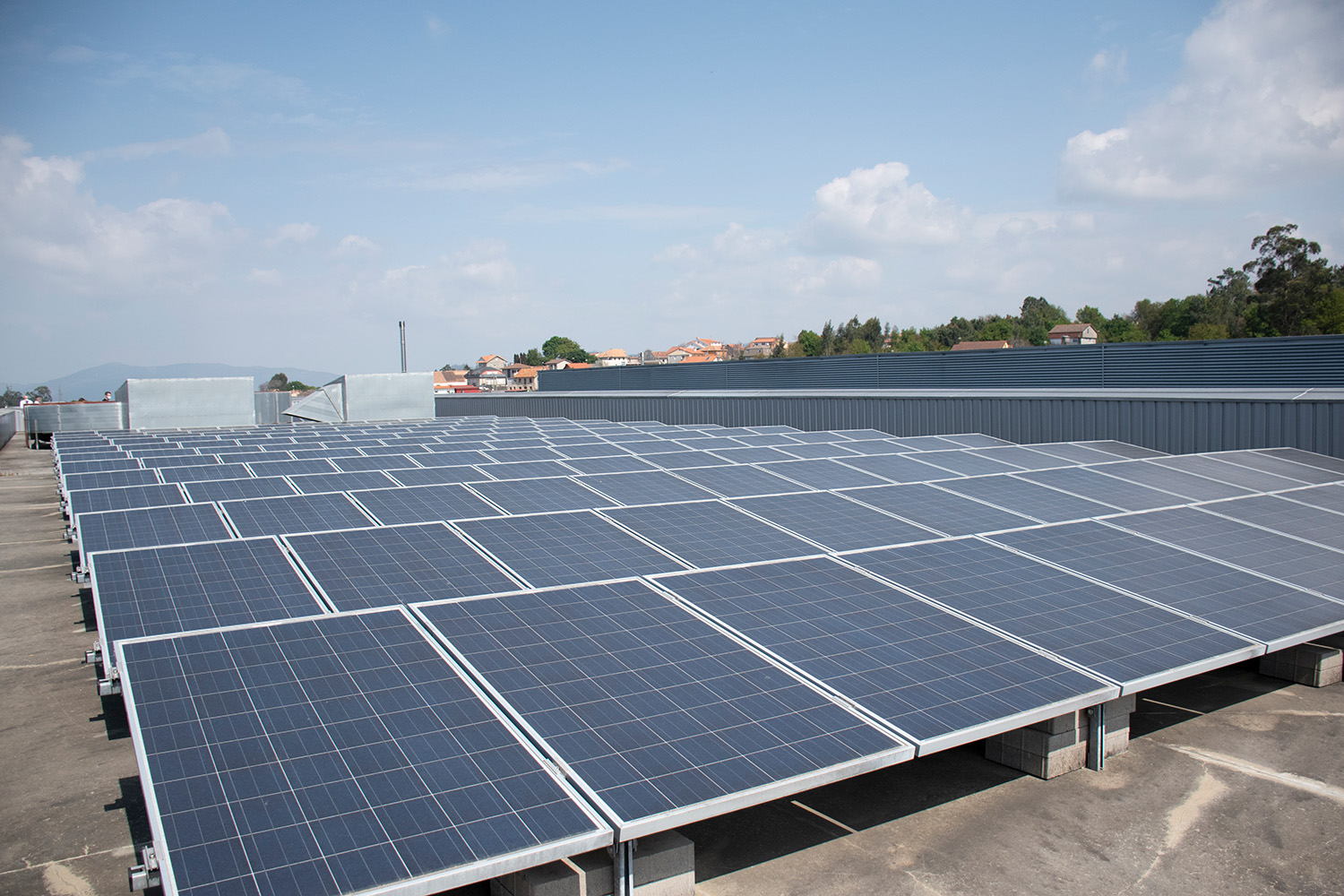
Ourense Health Area
On the first day, I visited two facilities as part of the Ourense Health Area - University Hospital of Ourense and the Piñor Mental Health Facility. The Health Area is currently participating in the LIFE RESYSTAL project to ensure their healthcare facilities are resilient to climate change impacts.
At a meeting with the hospital’s leadership team, I was introduced to Ourense Health Area’s Self-sustaining Hospital plan and other ongoing projects at the facility. As a part of this initiative, they have built two photovoltaic energy production plants, a trigeneration plant, and three biomass (wood) energy plants.
A quarter of all GHG emissions come from food production. Therefore, it was great to learn more about how the hospital manages its kitchen waste using the circular economy approach. After separating all organic waste, hospital staff work with the local university to determine the exact nutritional values of the food waste, to enable its use for animal feed.
Another big source of emissions in hospitals is transport and mobility. To reduce these emissions, the University Hospital of Ourense uses electric ambulances for planned patient transport, as well as hybrid and electric vehicles for home care.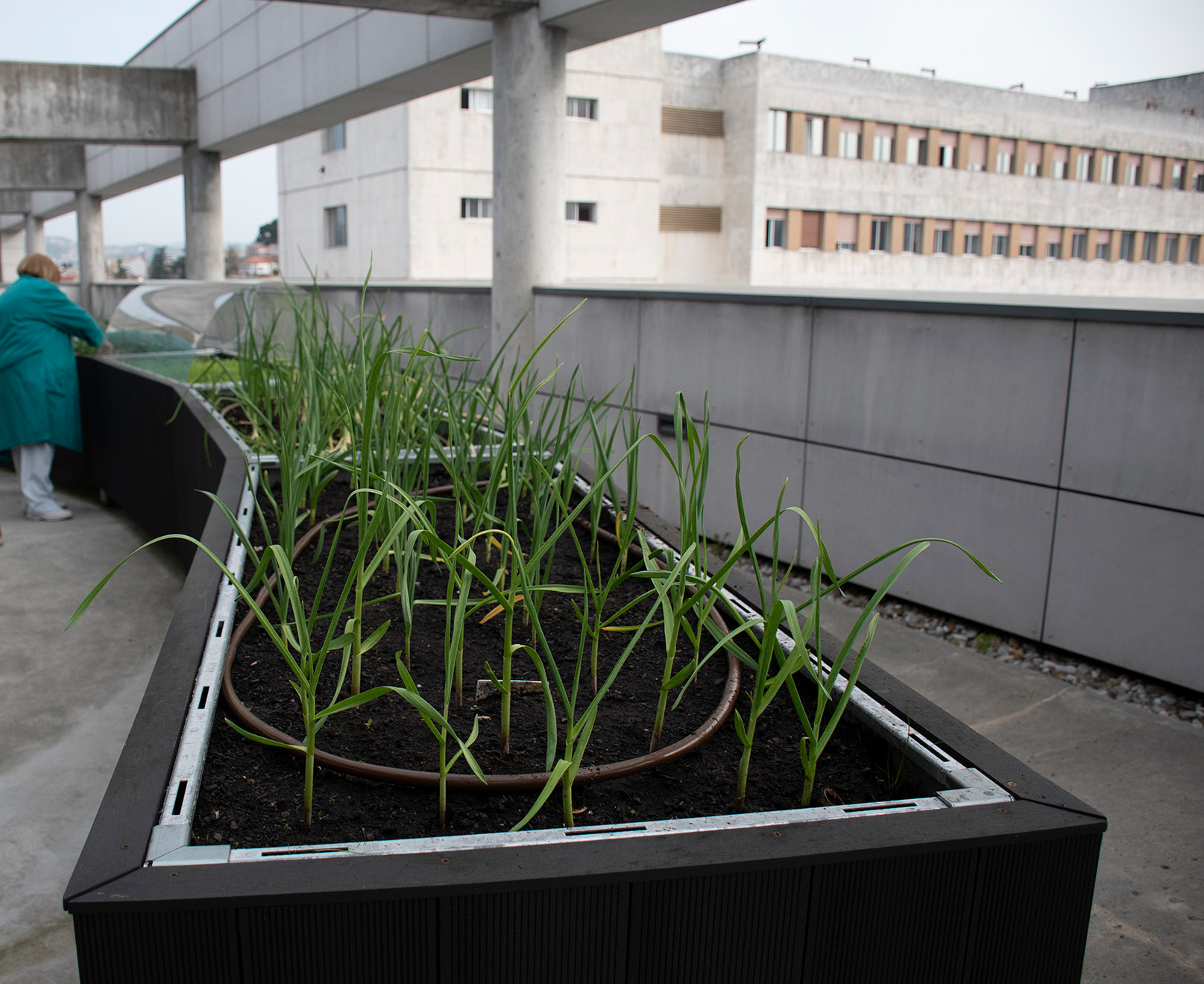
Ourense Health Area not only tries to reduce the impact of its operations on the environment, but also uses nature for the benefit of patients and staff. The first example of this are the therapeutic gardens on the rooftop of the University Hospital. These gardens were constructed in the context of the EU’s New European Bauhaus project and are used for the in- and out-patient treatment of mental health patients. Additionally, the gardens are used for staff breaks and meetings, and helped the hospital to prevent the spread of COVID-19 during the height of the pandemic.
The team at the Health Area is actively planning to provide more access to nature and gardening for staff, patients, and visitors at the Piñor mental hospital facility and the University Hospital of Ourense. They are collaborating with the Ourense city council to renovate urban gardening spaces and open up these spaces to patients.
Finally, I also learned about the hospital’s fully digitalised system for appointments, healthcare information, and patient records. By making all this information available digitally for patients and healthcare professionals across the region via an app the hospital can avoid massive amounts of paper waste. The app also allows for digital consultations, which help reduce emissions from transportation.
The Health Care Climate Challenge Awards ceremony
 On day two, I met sustainability managers from all seven health areas of the Galician Health Service to give a practical training session on how to use HCWH’s tools and resources, including the Climate Impact Checkup, a tool which allows healthcare facilities to measure their carbon footprint. The training also encouraged an exchange of best practices between the sustainability managers who were new to the topic and staff from the Lugo Health Area, who are very knowledgeable after participating in the Low Carbon Healthcare in the Mediterranean region project. HCWH’s tools and resources will help the Galician Health Service calculate the carbon footprint of its entire health system, including more than 400 hospitals and health centres.
On day two, I met sustainability managers from all seven health areas of the Galician Health Service to give a practical training session on how to use HCWH’s tools and resources, including the Climate Impact Checkup, a tool which allows healthcare facilities to measure their carbon footprint. The training also encouraged an exchange of best practices between the sustainability managers who were new to the topic and staff from the Lugo Health Area, who are very knowledgeable after participating in the Low Carbon Healthcare in the Mediterranean region project. HCWH’s tools and resources will help the Galician Health Service calculate the carbon footprint of its entire health system, including more than 400 hospitals and health centres.
After the training, I had the pleasure of presenting Health Care Climate Challenge Awards for Leadership and Resilience to Julio García Comesaña, the Minister of Health and President of the Galician Health Service. It was great to see so many people coming together to celebrate achievements in sustainable healthcare.
University Hospital of Vigo
The following day, I visited the University Hospital of Vigo, an impressive new BREEAM-certified hospital building surrounded by green spaces and a small river. I met with the nurse management team to discuss how nurses can get involved in the sustainability work of the healthcare facility and to introduce them to the Nurses Climate Challenge Europe.
Together with the hospital management team, I visited the technical heart of the building, from which the temperature and light level in every room of the hospital can be remotely monitored and controlled. It features sustainable centralised heating, lighting, and hot water systems. We also visited the biomass burner and the photovoltaic energy production unit, as well as a few patient rooms, to get an impression of the space. The rooms have big windows, natural light, a view of the green surroundings, and art is used (especially on the paediatric wards) to humanise the stay.
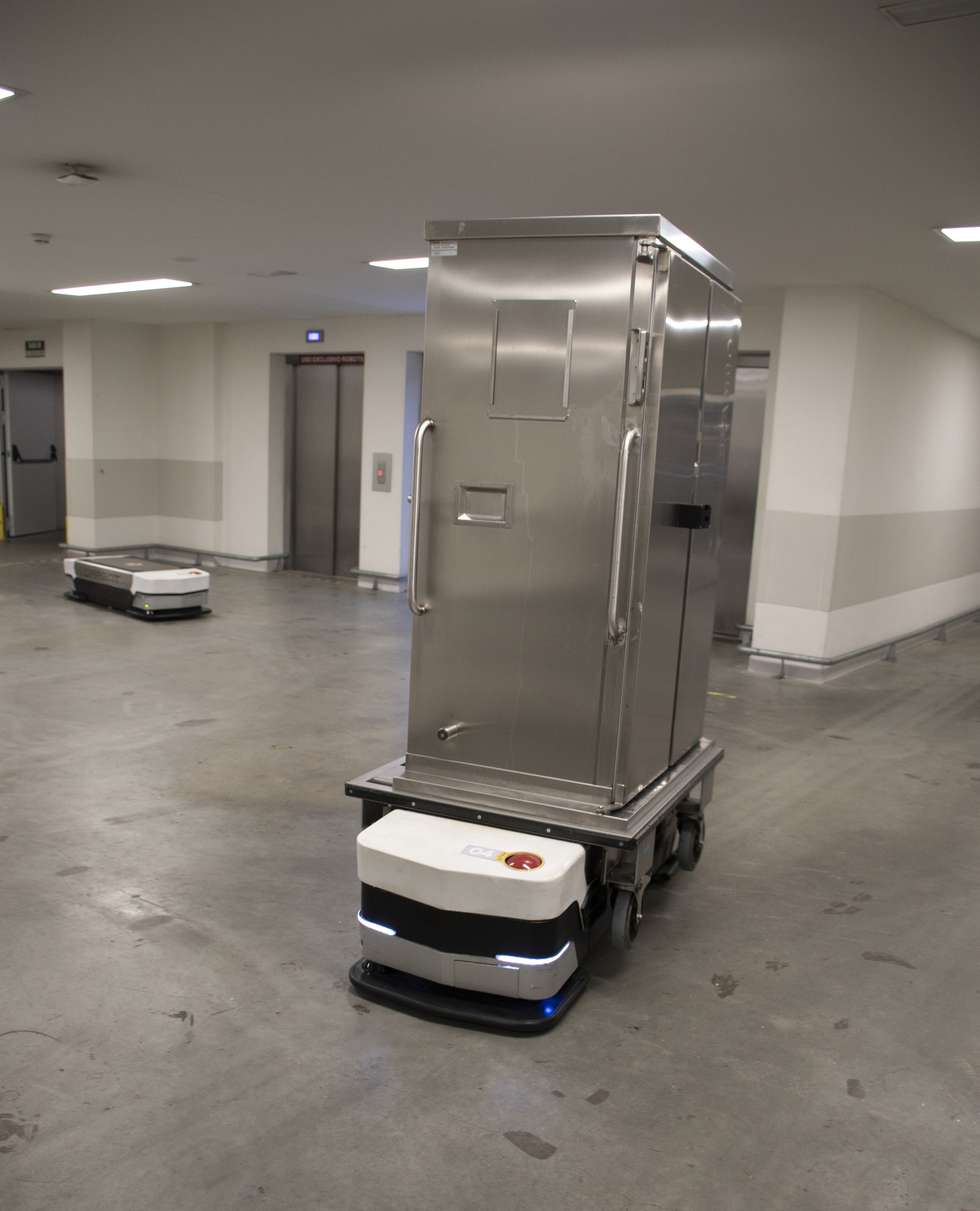 The support services are also included in the sustainability efforts of the hospital. Previously, each individual piece of laundry used in the hospital was packed in plastic. Plastic waste was significantly reduced by assessing the need for sterile textiles and only providing these when absolutely necessary, e.g. for immunocompromised patients.
The support services are also included in the sustainability efforts of the hospital. Previously, each individual piece of laundry used in the hospital was packed in plastic. Plastic waste was significantly reduced by assessing the need for sterile textiles and only providing these when absolutely necessary, e.g. for immunocompromised patients.
I was also very impressed by the digitalised materials request system, which assures that each ward orders only the necessary number of pharmaceuticals and materials. This system avoids stockpiling and waste of expiring products. Small robots automatically deliver and heat up patient meals, ensuring that there is limited to no food waste and fewer injuries from handling heavy food wagons.
A Laracha Primary Health Care Centre (PAC A Laracha)
On day four, we visited another impressive healthcare building. The PAC A Laracha is a small primary healthcare facility in the Á Coruña region that was also built in the context of the New European Bauhaus project. It combines biophilic design with a focus on energy neutrality and circular economy, built using only locally sourced wood.
With high ceilings, big windows, the warm colour of different wood types, and nature integrated into each part of the building (from the roof to small patios), it is not only sustainable and low-emissions, but also aesthetically beautiful. During my visit, I met with the architect of the building who gave me a snapshot of how they ensure the hospital is sustainable, e.g by harvesting and reusing rainwater.
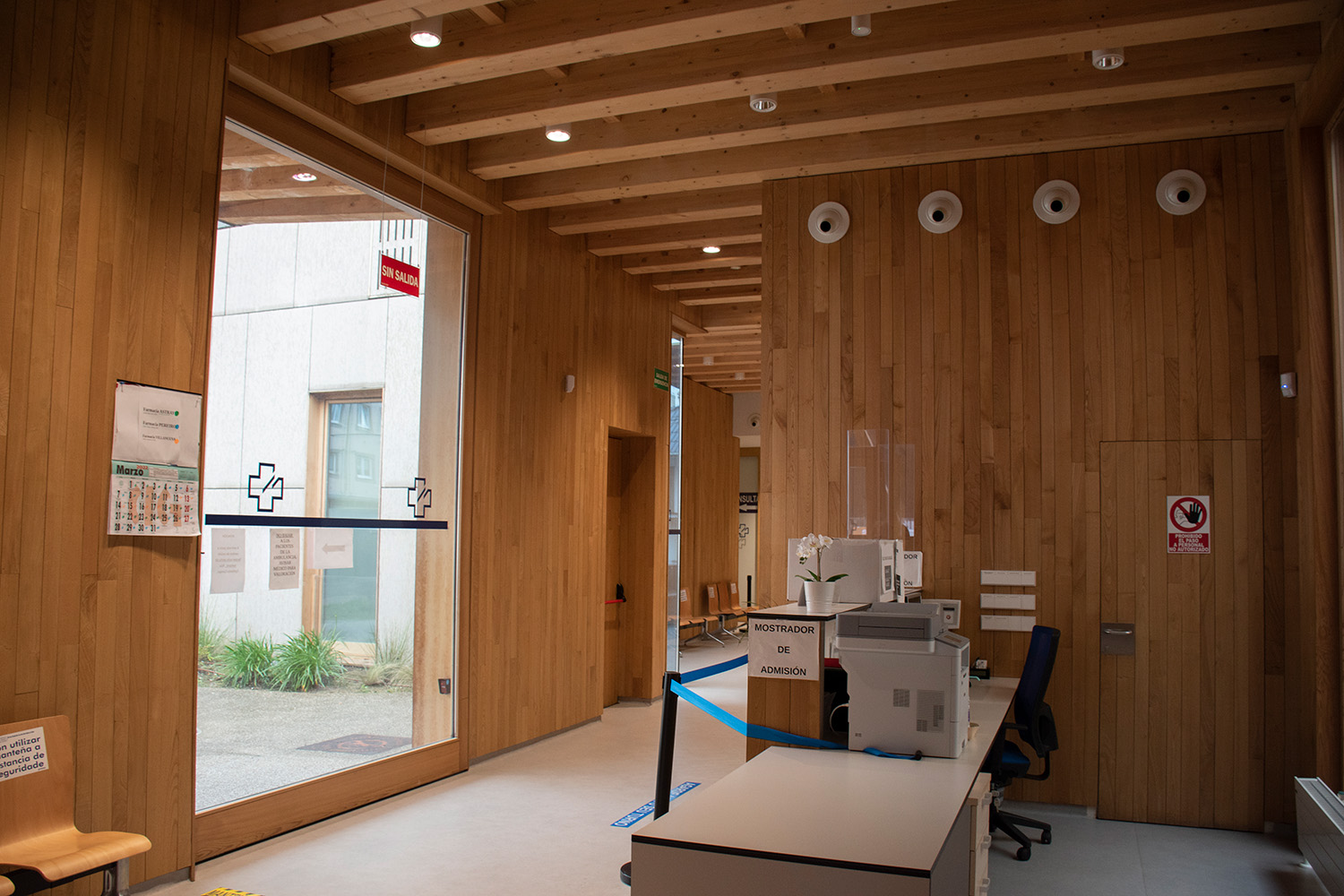
Psychological Hospital Santiago de Compostela
On my last day before returning to Brussels, I visited a hospital that was a stark contrast to the newly constructed and modern buildings of the previous facilities. The Psychological Hospital of Santiago de Compostela is situated in a beautiful old monastery with extensive forests and fields belonging to the hospital compound. Making such a historic building energy efficient and sustainable presents a bigger challenge than the modern hospitals I visited earlier.
Under the leadership of one of their psychiatrists, the hospital has started taking advantage of the vast premises and green spaces available to the staff and patients. He initiated the use of natural materials in art and music therapy, as well as gardening as a way of giving his long-term patients a daily routine and social integration.
Final thoughts
It was great to meet all of the hard-working and enthusiastic staff at SERGAS, using their specialised knowledge to find ways to improve their health system and protect their patients as well as the environment. I hope that sharing the accomplishments and efforts of the Galician Health Service will inspire other healthcare providers to take action.
